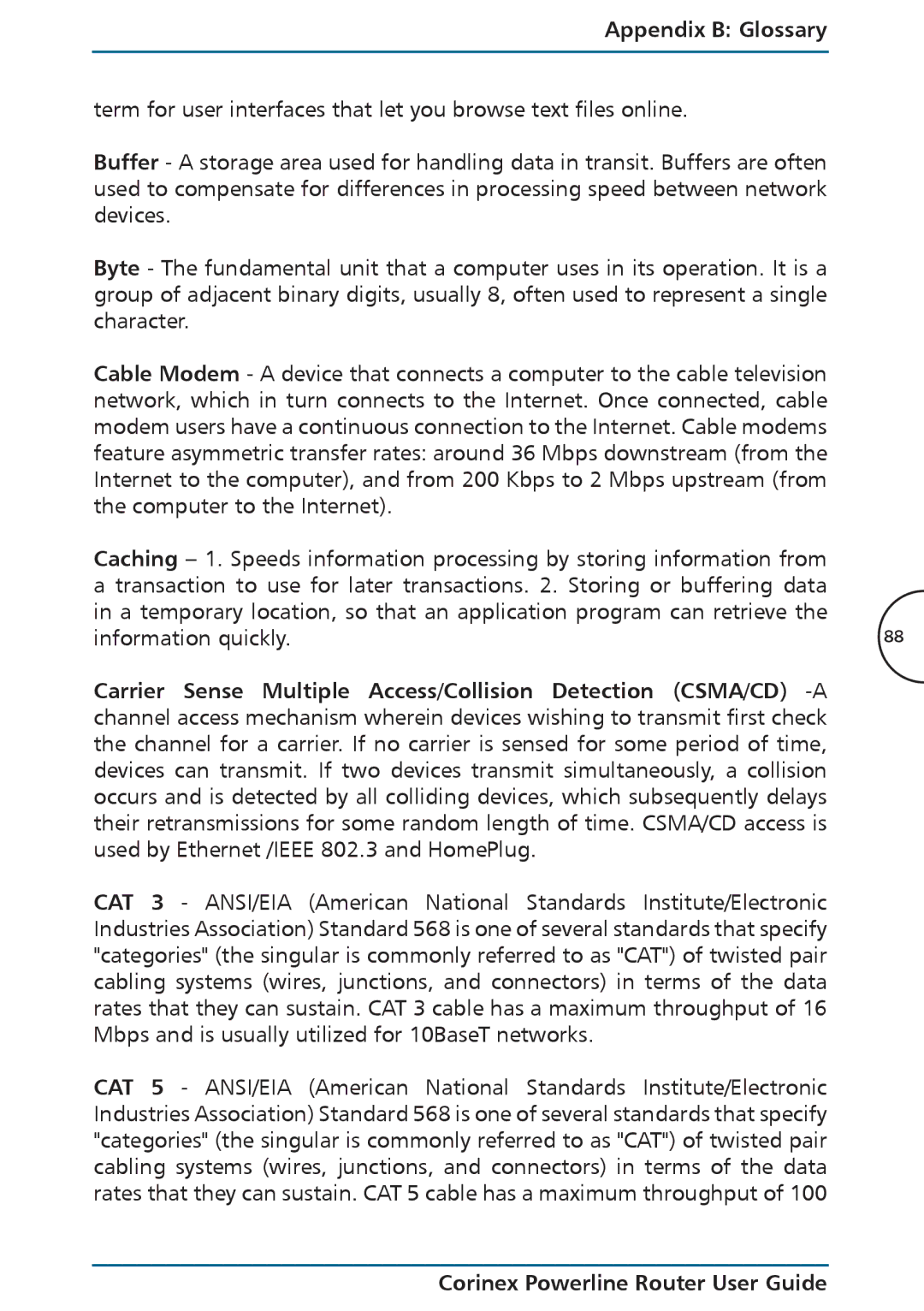
Appendix B: Glossary |
|
|
|
term for user interfaces that let you browse text files online. |
|
Buffer - A storage area used for handling data in transit. Buffers are often |
|
used to compensate for differences in processing speed between network |
|
devices. |
|
Byte - The fundamental unit that a computer uses in its operation. It is a |
|
group of adjacent binary digits, usually 8, often used to represent a single |
|
character. |
|
Cable Modem - A device that connects a computer to the cable television |
|
network, which in turn connects to the Internet. Once connected, cable |
|
modem users have a continuous connection to the Internet. Cable modems |
|
feature asymmetric transfer rates: around 36 Mbps downstream (from the |
|
Internet to the computer), and from 200 Kbps to 2 Mbps upstream (from |
|
the computer to the Internet). |
|
Caching – 1. Speeds information processing by storing information from |
|
a transaction to use for later transactions. 2. Storing or buffering data |
|
in a temporary location, so that an application program can retrieve the |
|
information quickly. | 88 |
Carrier Sense Multiple Access/Collision Detection (CSMA/CD)
CAT 3 - ANSI/EIA (American National Standards Institute/Electronic Industries Association) Standard 568 is one of several standards that specify "categories" (the singular is commonly referred to as "CAT") of twisted pair cabling systems (wires, junctions, and connectors) in terms of the data rates that they can sustain. CAT 3 cable has a maximum throughput of 16 Mbps and is usually utilized for 10BaseT networks.
CAT 5 - ANSI/EIA (American National Standards Institute/Electronic Industries Association) Standard 568 is one of several standards that specify "categories" (the singular is commonly referred to as "CAT") of twisted pair cabling systems (wires, junctions, and connectors) in terms of the data rates that they can sustain. CAT 5 cable has a maximum throughput of 100
